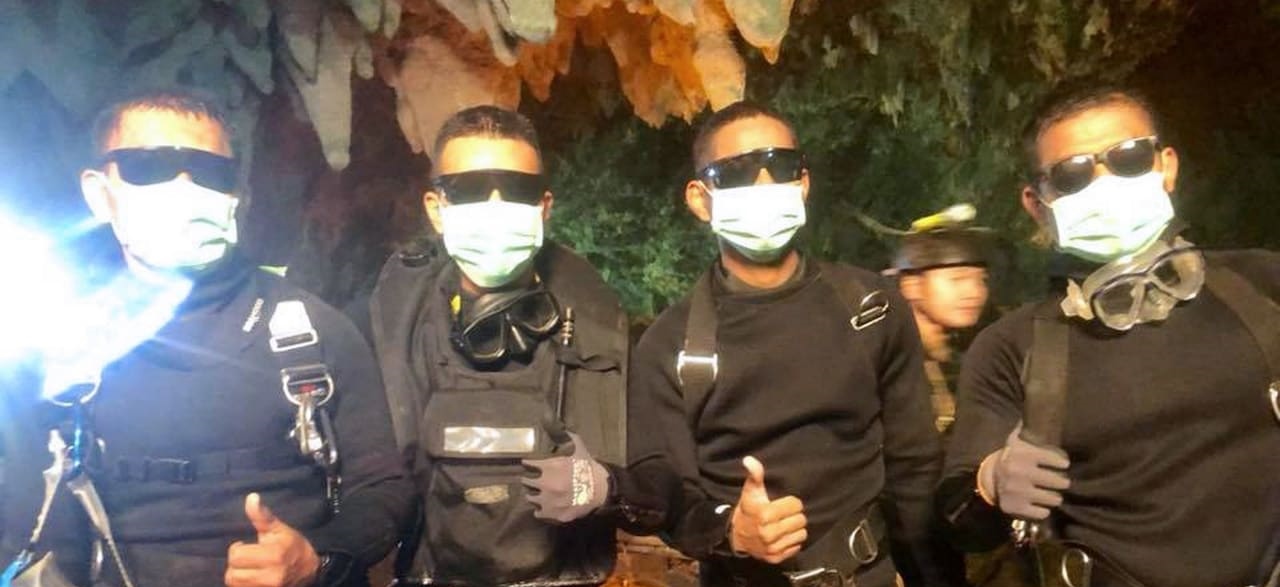Thailand Cave Rescue Operation
July 13, 2018 | Expert Insights

The Thai soccer rescue mission that had captivated the world has come to a successful end through the bold efforts of an international rescue team.
Background
Thailand, formerly known as Siam, is a country in South-east Asia. It is bordered by Myanmar, Laos, Cambodia, Malaysia and Vietnam. It is the world’s 21st most populated country and the second largest economy in South-east Asia. Various Indianized kingdoms such as the Mon, the Khmer Empire and Malay states ruled the region. Thailand is known for its tropical beaches, opulent royal palaces, ancient ruins and ornate temples displaying figures of the Buddha.
On June 23rd 2018, 12 members aged 11 to 17 of the Wild Boars soccer team along with their coach had gone missing in the Tham Luang cave complex in the Chiang Rai district of northern Thailand after a flash flood. The Tham Luang is a cave complex that lies beneath the Doi Nang Non mountain range. Ten kilometers long, it has many deep recesses, narrow passages and winding tunnels. Some parts of the cave are seasonally flooded.
After 17 days of a search made complex by incessant rains, they were found on 2nd July 2.5 miles inside the cave. While officials began formulating a plan to retrieve them, they were provided with food, blankets, water and medical aid. Over 1,000 people were involved in the rescue operation, including Thai Navy SEALs, volunteers and technical assistance teams from multiple countries.
Analysis
The rescue team that worked to save the group trapped in the Thai cave was a mix of international divers collaborating with Thai navy Seals in an operation deemed truly global. Little information has been released about exactly who was involved, mostly because participants were reluctant to talk.
Numerous Thai Special Forces were part of the efforts, most notably Doctor Pak Loharnshoon and three yet-to-be-named divers who volunteered to stay by the boys' side after they were found underground a week ago. Four Thai Navy Seals personnel were the last to leave the cave on Tuesday evening, led by Rear Admiral Arpakorn Yuukongkaew. He was responsible for updating reporters on the progress being made. Saman Gunan, a retired Thai navy diver who had volunteered, lost consciousness and died while attempting to pass through a narrow passageway.
British divers John Volanthen and Richard Stanton, and British caving expert, Robert Harper were called in by Thai authorities. They have expertise in a number of cave diving rescue operations in countries such as Norway, France and Mexico. Dr. Richard Harris from Australia had examined the boys and given the green light for the rescue operation. An anesthetist by training, he has also been specializing in expedition medicine and retrieval operations. Numerous other valiant men, divers by profession, participated in the efforts including Ben Reymenants from Belgium, Claus Rasmussen and Ivan Karadzic from Denmark, Mikko Paasi from Finland and Erik Brown from Canada.
The team was taken to the Chiang Rai hospital and kept in a sterilized isolated unit for precautionary measures, where they will be evaluated by a medical team for 5-7 days. While the boys were reported to be in good health, two of them had contracted minor lung infections. They were also vaccinated against rabies and tetanus. However, there are concerns that boys might have contracted a cave-dwelling virus or bacterial disease which spreads from animals to humans. “Living in a cave has a different environment, which might contain animals that could transmit any disease,” a spokesperson from the hospital said. “Some potential infectious hazards are listeriosis, meliodosis and histoplasmosis.” Histoplasmosis is caused by a fungus found in the droppings of birds and bats. It kills 1 in 20 children and roughly 8% of adults who are infected being particularly problematic for those with weak immune systems.
Tropical caves are hotspots for potentially deadly infections and home to an abundance of wildlife from birds, bats and rats to venomous spiders, millipedes and scorpions, who are carriers of rabies, Marburg virus, obscure fungal pathogens and “cave fever”. The near 100% humidity of the caves provides a thriving environment for bacteria and parasites. The rescued team is currently undergoing blood tests that will reveal if they have been exposed to any pathogens.
Assessment
Our assessment is that the courageous efforts by the rescue team are laudable. We believe that many such lives in jeopardy can be saved through the collective efforts of the international community. We feel that this recent success will serve to inspire others to altruism.








Comments